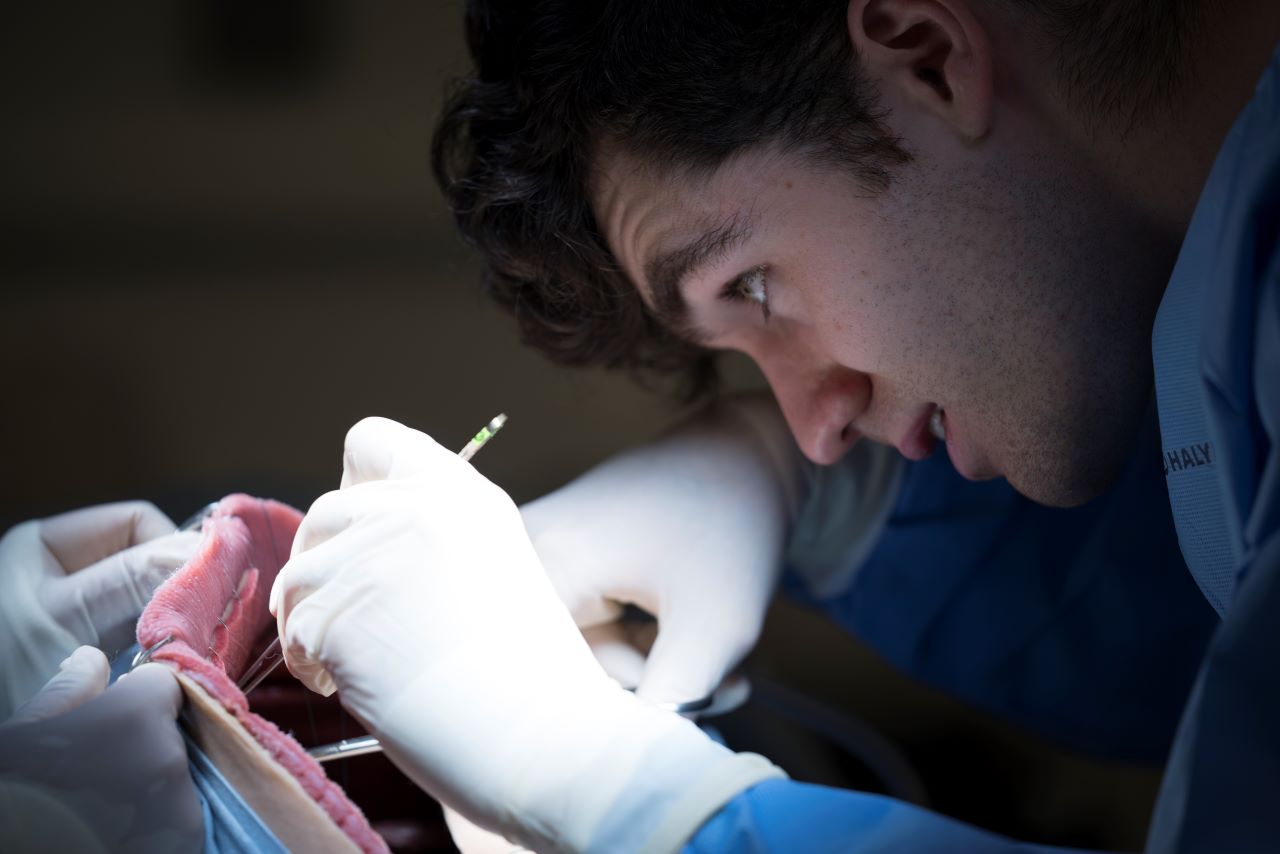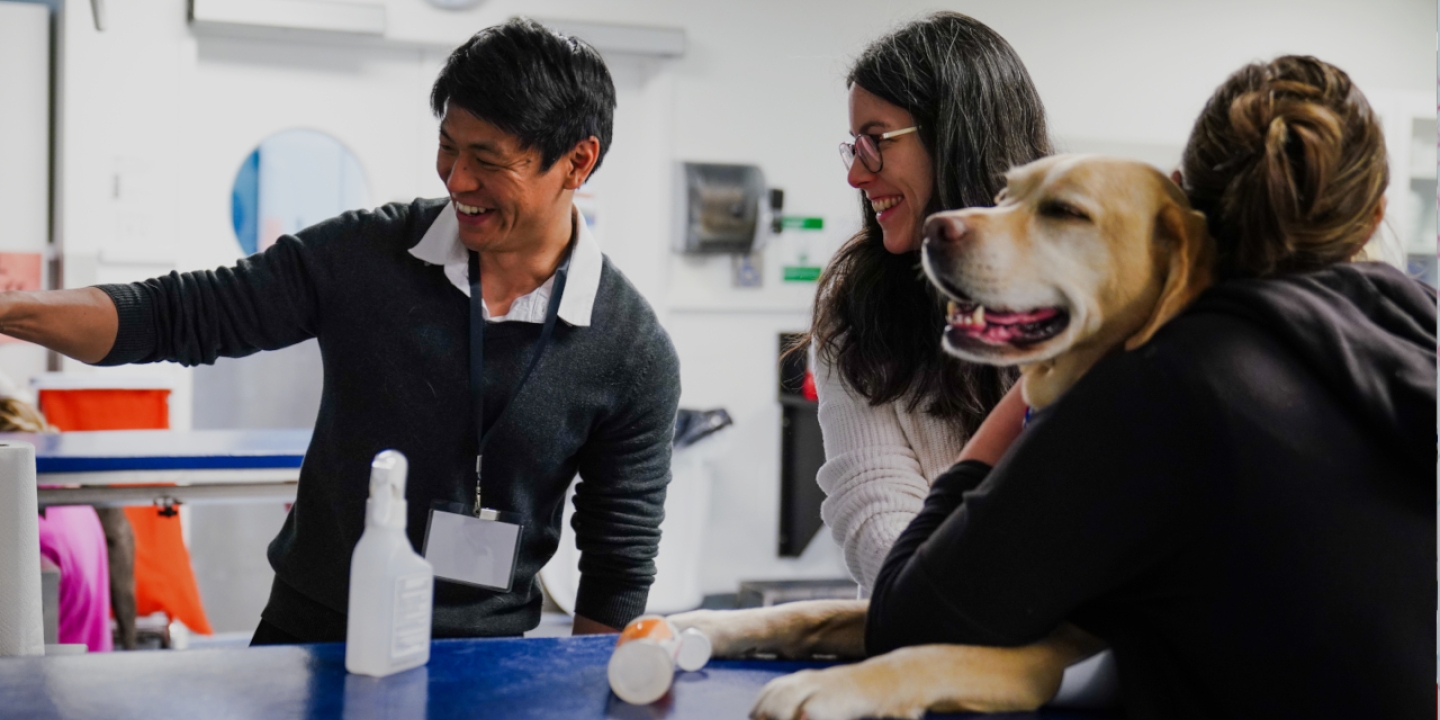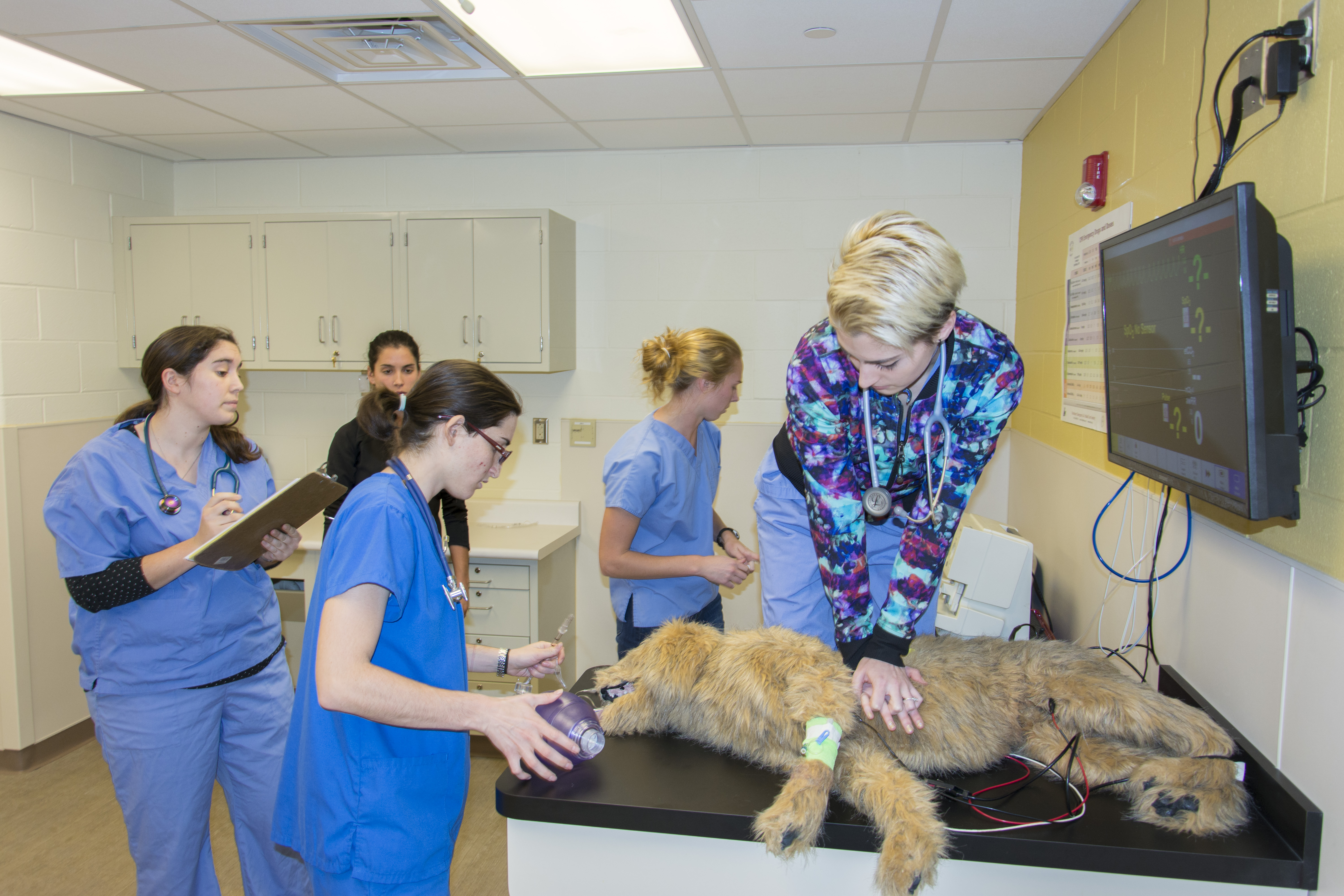Simulation Training
The Tetlow and Roy Park Veterinary Innovation Lab
At Cornell, we want students to get as much hands-on experience as possible. The Tetlow and Roy Park Veterinary Innovation Lab helps you do just that. This cutting-edge veterinary simulation center lets you practice veterinary skills with a lifelike "patient," including listening to heart and lung sounds, inserting catheters, and hooking up monitoring devices to get feedback orchestrated through faculty-developed software.
Thanks to this center and other training programs, simulation-training is woven throughout Cornell’s curriculum. First-year students practice exam basics on the robotic dog (fondly known as "RoboJerry" — see below for more details) or cat. Second and third-year students perform simulated scenarios in core classes and students role play with actors in the required client communications class along with a simulated patient.
RoboJerry
RoboJerry, the star of the Tetlow and Roy Park Veterinary Innovation Lab, was developed by faculty member Dr. Daniel Fletcher and includes an accelerometer chip that detects chest compressions and simulated stethoscope to hear normal and abnormal heart and lung sounds.
An air tank with computer-controlled valves allows Jerry to “breathe.” Sensors in his limbs can determine whether a student has found his pulse, and simulated medications can be administered through his IV catheter. All of his vitals can be programmed and adjusted in real time.
This way, students can perform CPR and other emergency procedures in real-time in a safe environment that allows for deliberate practice and reflection.
SynDaver
Cornell is also home to state-of-the-art artificial canine and feline cadavers on which veterinary students can practice surgical skills. The synthetic cadavers — called SynDaver units — mimic living tissue, with individual muscles, bones, and organs. They even bleed and breathe like a living canine patient.
The models are made from water, fiber, and salt, which better mimic living tissues, and have been key for veterinary students learning procedures like gastronomies, gastropexies, and addressing hemorrhaging vessels.
As a student at Cornell, you will be given these and many other opportunities to practice and perfect your skills.





